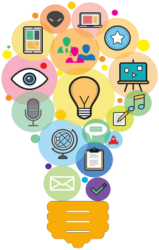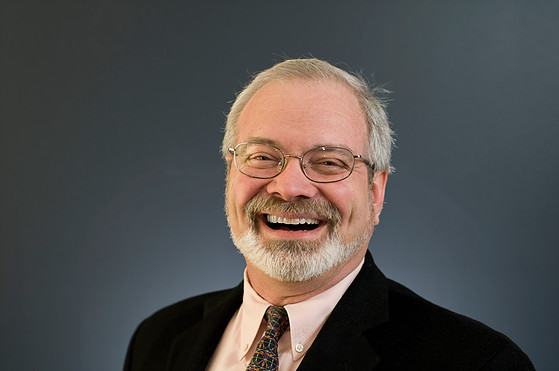
Q2 / 2016
From the Editor
by Crista Mohammed

Hello dear readership. We have another exciting installment of IDeaL: Design for Learning. Hope you enjoy.
In this issue, Robert Hershenow—in the co-manager’s column; and Jamye Sagan—in a session review of Summit 2016, confirm that I am a dope for having missed the 63rd STC summit! Well, no excuses for those of us who missed Summit 2016, we have a whole year to plan for Summit 2017, destined for Washington, DC (May 7-10, 2017).
Robert focuses on the meetings and networking needed for running and managing the dynamic and driven organization that is the STC. Read more
Jamye reviews some of the sessions that were particularly useful and enjoyable. Read more
Jamye makes a second contribution to this issue: She advocates for using progression sessions as a way for building confidence and honing your presentation skills. Arguing that full-length presentations may be intimidating to the uninitiated, Jayme shares her personal experiences with the shorter progression format, and how they have helped her grow from a self-conscious first-timer to a confident veteran. Read more
Mellissa Ruryk shares useful insights on a shared frustration—Word™. Mellissa gives us many, many useful tips for fixing your document layout in Word, many of them new to me. Guess you can teach an old dog some new tricks. Whether these features are known to you or not, Mellissa has described them in a neat, fun-to-read package. I certainly will be sharing her column with my students…with the expectation that I will have better formatted papers to read! Read more
Following on the heels of Virginia Butler who, in our last issue, made a heartfelt plea to mentor in the STC Mentorship Programme, I am issuing a call to volunteer for our SIG and the STC at large. I share lessons learnt from over twenty years of volunteering. Read more.
Finally, “big tings a gwaan” (as Jamaicans say, meaning “big things are happening”) with our student outreach efforts. The IDL SIG recognizes the need to support Instructional Designers in training, as part of strengthening and professionalizing ID practice through formal education. Since SIGs can no longer offer scholarships, the IDL SIG has rolled out a new student support scheme: starting September 2016, students can win free STC and IDL SIG membership for original articles chosen for publication in this very newsletter. Isn’t that simply brilliant? We will encourage budding scholars to share their work with others in the community; and in turn, they will earn membership to a thriving community of practice—the STC. Wow! Read Sylvia Miller’s contribution in this issue to find out more.
From your Co-Manager
by Robert Hershenow, Co-manager

I’m just going to come out and say it: Summit 63 was the best one yet. Besides the educational sessions and programs, the networking and socializing opportunities, the food and beverage surprises (citrus ceviche, anyone?), there were many chances to connect face-to-face with STC leadership to learn and influence where the Society and Communities are headed. And it’s always a treat to stay in a nice hotel (the Marriott has the best pillows) and to explore another city’s restaurants and night life, bowling alleys and ballparks. AND we were right next to Disneyland.
But wait—there’s more! When I reviewed the schedule, I found an enticing session in every single time slot. Not just one that looked OK, but usually several that I wanted to attend. And each one lived up to its promise. Designing and delivering a riveting, dynamic presentation is not easy, but most of them were over before I thought about what time it was. Big thanks to the presenters for rising so enthusiastically to the challenge, and to Todd DeLuca and the Conference Committee for building an outstanding program.
Also impressive was the easy-to-use mobile app, which let me build and display a custom schedule on my cellphone. This was much more convenient on-the-go than pulling out the program booklet or notes on paper, and a month later I’m still consulting it for reference.
For many attendees, the greatest value of the Summit is seeing friends and colleagues with whom we interact only virtually during the rest of the year. Leadership Day (open to everyone this year, not just leaders—what a great idea): the Communities and Honors Receptions, SIG-hosted business meetings and events, and social outings offered by the host Chapter all helped to bring us together, and many impromptu gatherings happened as well. IDL SIG leaders met over dinner at a local restaurant and charted strategy for the year ahead. We also hosted a table at the Communities Reception and two at the Business Meeting Breakfast, where we reconnected with each other, met new members, talked about what we do, and successfully recruited for open leadership positions in the SIG.
At one breakfast, SIG and STC leaders met to discuss the past year’s developments and strategies going forward. STC Executive Director Chris Lyons envisions SIGs working more transparently within the Society as providers of accessible content rather than keepers of proprietary information. Historically, the challenge has been in finding ways to share our insights without threatening the confidential nature of our discussions. Chris has proposed that each SIG add a Content Curator, a person (or persons) whose work will be to “coalesce the discussion into useful content” for all members. We also talked about more closely connecting our multiple online SIG presences, which would give us increased Search Engine Optimization, better analytics, easier access and maintenance, and savings in cost and time. There are many opportunities to contribute, so if you’re interested in helping manage our content, activities, or website, please get in touch.
My top Summit souvenir is a new copy of Technical Communication Today, the text upon which the STC’s Tech Comm Certification is based. I’m studying for the exam in the Fall. For more info on certification see http://www.stc.org/certification.
If you attended the Summit you are already registered for Summit Playback (on-demand access to all the recorded sessions online, through March 2017). If you didn’t, STC members can sign up before 31 August for $199; that price increases to $249 starting September 1st. For details see: http://www.stc.org/education/technical-communications-summit/summit-playback .
Finally, check out the Summit highlights video online at http://summit.stc.org/. There’s a nice shot of IDL Co-Manager Mellissa Ruryk at 0:26; the back of my head appears momentarily at 0:35; and our own Kim Lindsey gets airtime at 1:40. Wow! Don’t miss it.
About IDeaL: Design for Learning
Publication Policy: We invite letters, articles, book reviews, and other items for publication. Articles may contain up to 1,000 words. Picture formats: JPG, GIF, PNG; Text format: Word, RTF, or ASCII. Send items to Crista Mohammed at newsletter@stcidlsig.org
Advertising Policy and Rates: We encourage advertising as long as it follows STC guidelines and promotes services of interest to IDL SIG members.
Ad sizes and rates:
Half page (7.5×4.5): $75 (1 issue); $225 (4 issues)
Business Card (3.5×2): $25 (1 issue); $100 (4 issues)
Please submit electronic copy only in .TIF, .GIF, or .PNG format. Send ads to Crista Mohammed at newsletter@stcidlsig.org. Make checks payable to Society for Technical Communication and send to: Robert Hershenow, STC IDL SIG, 616 Colusa Ave, Berkeley CA 94707.
Copyright Statement: This newsletter invites technical communicators in the field of instructional design to submit articles for publication. The authors implicitly grant a license to this newsletter to run the submission, and for other STC publications to reprint it without permission. Copyright is held by the author. Let the editor know in your cover letter if the article has run elsewhere, and if it has been submitted for consideration to other publications. Design and layout of this newsletter are copyright STC, 2005‐2016.
IDL SIG Website: http://www.stcidlsig.org
SIG Newsletter Archives: http://www.stcidlsig.org/wp/newsletter/





